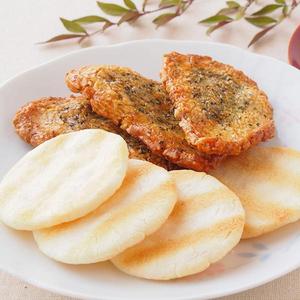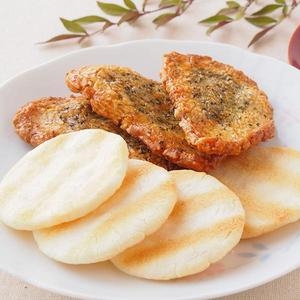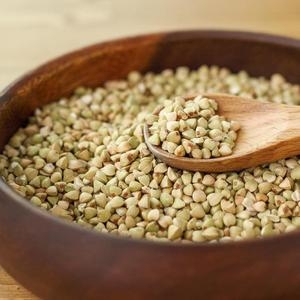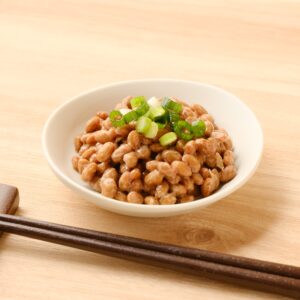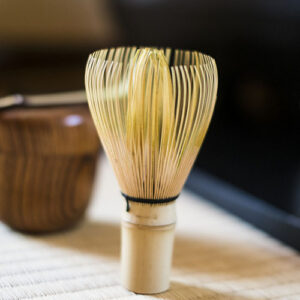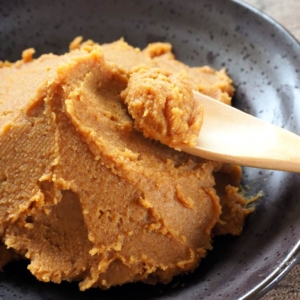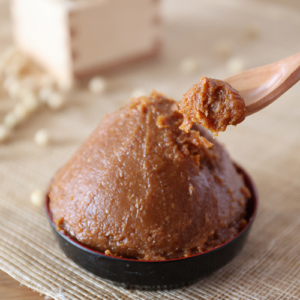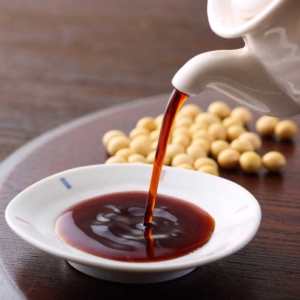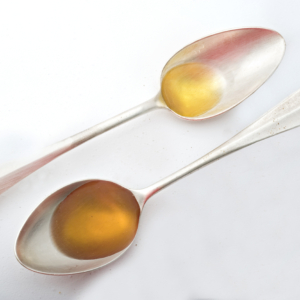Senbei is simple, tasty, and due to its wide range of variety, can be enjoyed on every occasion. There are so many kinds of senbei it can be overwhelming to choose just one. Some prefectures in Japan even come up with specialty senbei that is very different from ordinary senbei. We hope after reading this article you can find a type of senbei that you like.
 Content List
Content List
- Senbei
- History of Senbei
- How To Make Senbei
- Other Japanese Rice Crackers
- Okaki
- Arare
- The Difference between Senbei, Okaki, and Arare
- Common Varieties of Senbei
- Usuyaki And Atsuyaki Senbei
- Nori Senbei
- Zarame Senbei
- White Sugar Senbei
- Kometsubu Senbei
- Age Senbei
- Blackbean Senbei
- Famous Specialty Senbei
- Nure Senbei
- Soka Senbei
- Tansan Senbei
- Deer Senbei
- Nanbu Senbei
- Kawara Senbei
- Other Senbei
- Seafood Senbei
- Hone Senbei
- Shirasu Senbei
Senbei
Senbei is a Japanese traditional round rice cracker. Taste-wise, senbei can be very different according to each type. Senbei makers have been very creative in developing all kinds of flavor for this quintessential Japanese snack. Some recipes even date back to more than a hundred years ago!
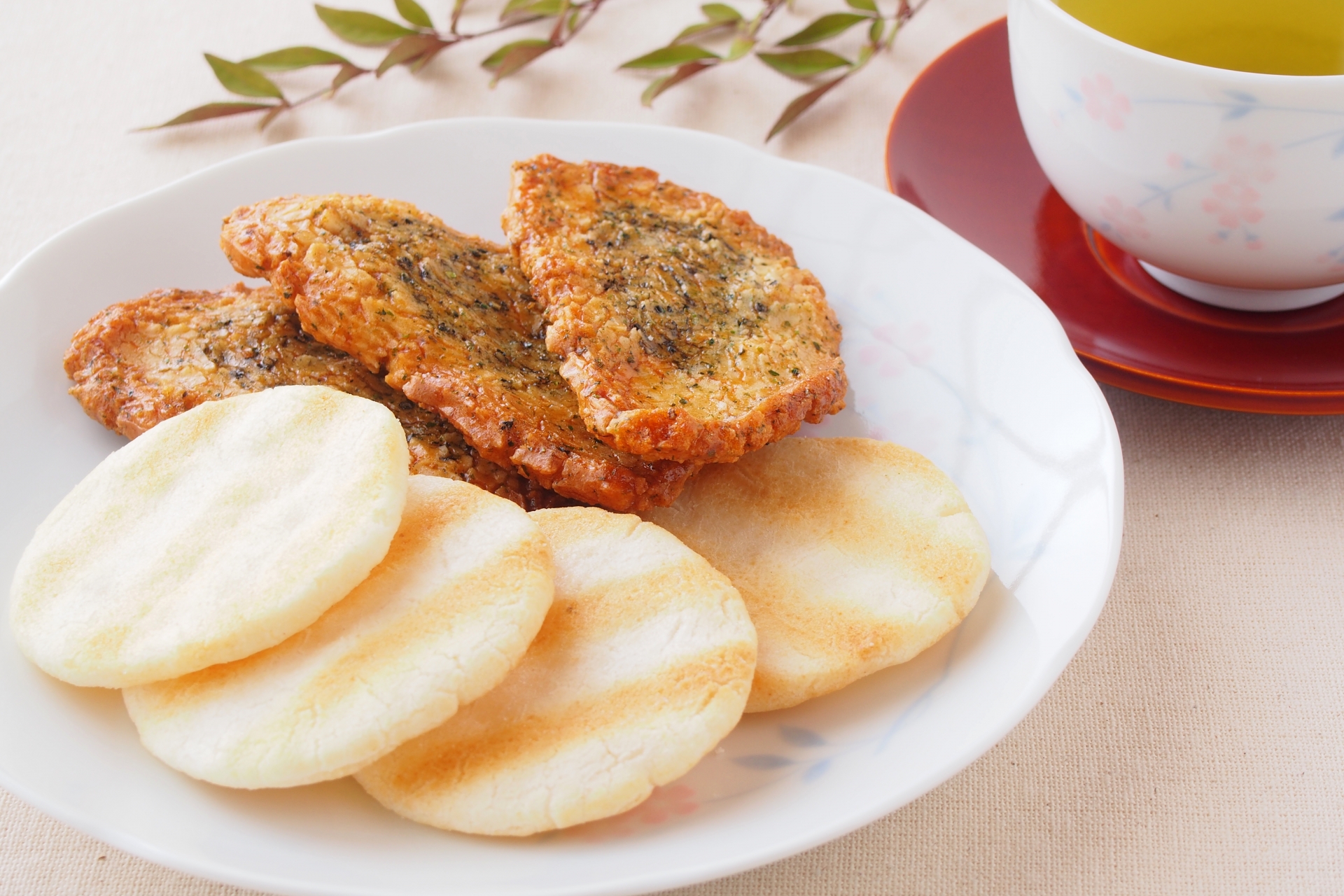
In Japan, the most common ingredient for senbei is uruchi rice, a type of rice that is eaten everyday in Japan. Senbei can be savory or sweet. That is why it can be enjoyed with drinks or just eaten as is.
Since it’s relatively cheap, senbei is a very common snack in Japan. In fact, you can find senbei almost everywhere. From supermarkets, convenience stores, food stalls, to artisan shops. Yes, there are artisan senbei shops that offer higher quality handmade senbei. Artisan senbei are typically sold as souvenirs or specialty snacks.
Outside Japan, senbei is usually called Japanese rice crackers. But, There are other kinds of rice crackers in Japan, they are called arare and okaki. The term senbei usually means the rice crackers that are round in shape and made from uruchi rice.
The History of Senbei
Rice crackers have a very long history. It is predicted to have existed in China during the rule of Han dynasty (202 BC – 8 BC). Back then, rice crackers were eaten as an official meal of the Chinese court and were eaten on January 1st and March 3rd to celebrate the holiday. Rice crackers were brought to Japan from China around the Asuka Period (538 AD – 710 AD).
However, there are still a lot of other theories on how Japanese senbei was invented and became popular in Japan for the first time. One of the most famous theories is that a woman called Osen invented Japanese senbei In the Edo period (1603 – 1868) by cooking leftover dango (mochi round balls) into senbei by flattening and roasting the snack. The culture of flattening and roasting food similar to dango itself is predicted to start in Japan from the Yayoi period (1000 BC – 800 BC).
In the Edo period, ‘senbei’ is a name for a roasted snack that is made out of flour mixed and glossed with sugar. At that time, there was a variant of senbei called salt senbei which is very similar to savory senbei that is famous today. It was considered as a low-class snack. Salt senbei was popular among farmers because it can be made with leftover rice.
After that, people started to glaze salt senbei with soy sauce or other seasonings. It gained more popularity in late 1645 and the snack evolved into the senbei that we know today. As a matter of fact, a lot of legendary senbei shops that are still making senbei today emerged during the Edo period.
How to Make Senbei
-
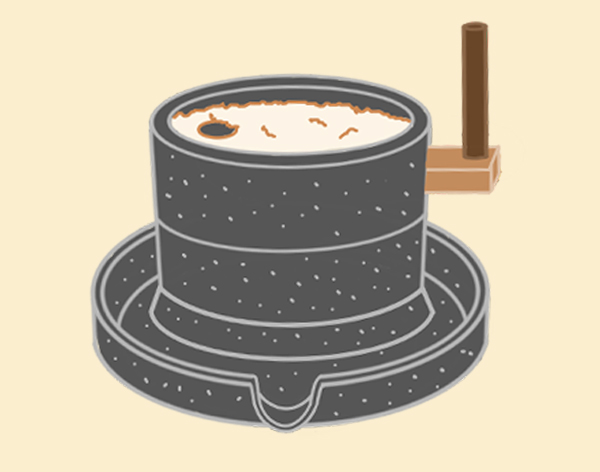
STEP 1
To make senbei traditionally, artisan senbei makers would use stone mills to grind the rice. However, most senbei makers in Japan right now would use machines to grind it.
-
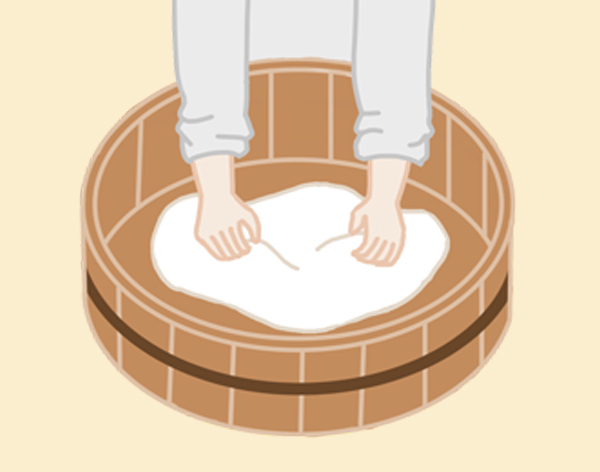
STEP 2
After grinding, rice flour is mixed with warm water and made into a dough. The dough will be kneaded with hand or machines.
-
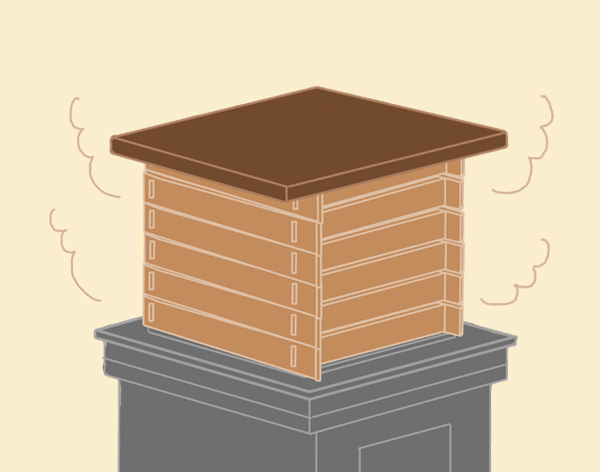
STEP 3
Then, the dough is steamed for about 40 minutes.
-
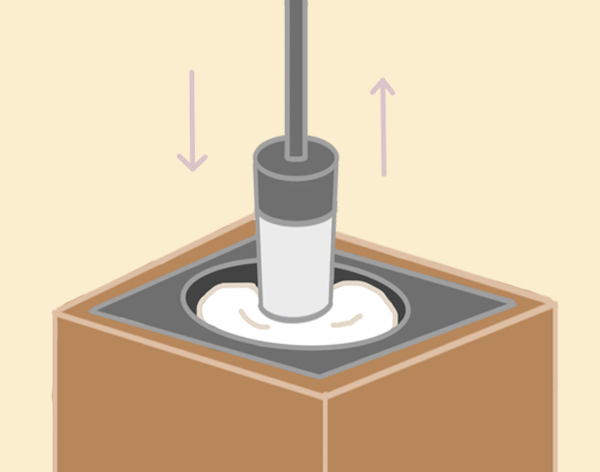
STEP 4
After steaming is over, the dough is kneaded again for a minute while mixed with seasonings.
-
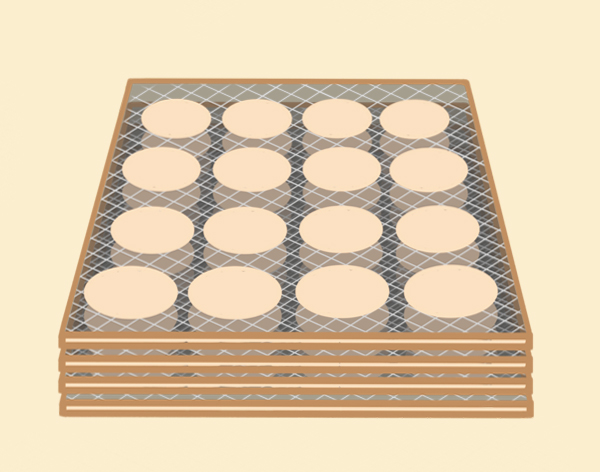
STEP 5
Next, the dough is formed into thin circle disks and dried for hours. This allows the senbei disks to harden and have a crispy texture.
-
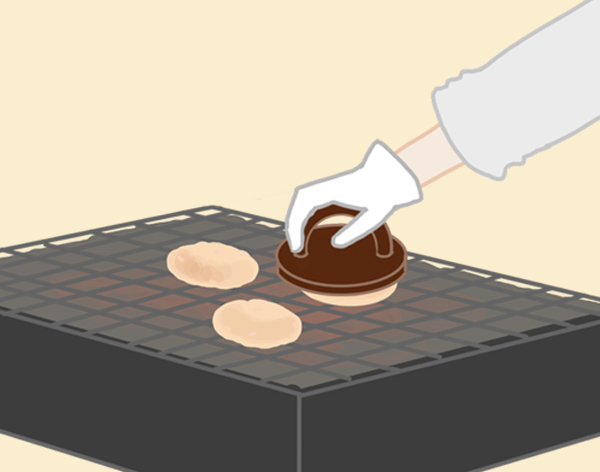
STEP 6
The senbei disks are roasted over an open flame grill. It is crucial to press the senbei while roasting so it doesn’t curl or has too many big blisters.
-
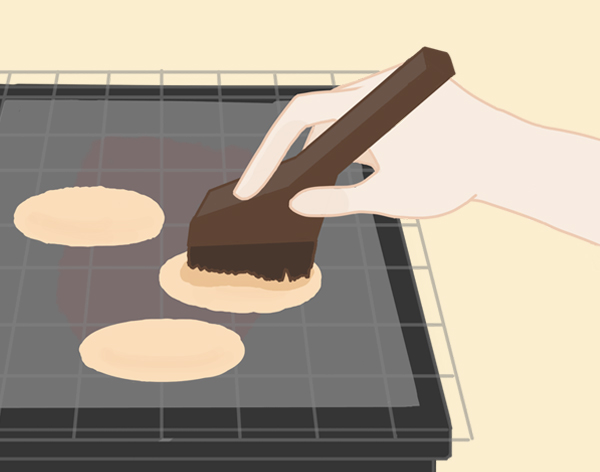
STEP 7
Senbei is glazed with soy sauce or other ingredients. However, not all senbei is glazed. Some only sprinkled with seasonings, some dipped in soy sauce. It all depends on the type of senbei.
-
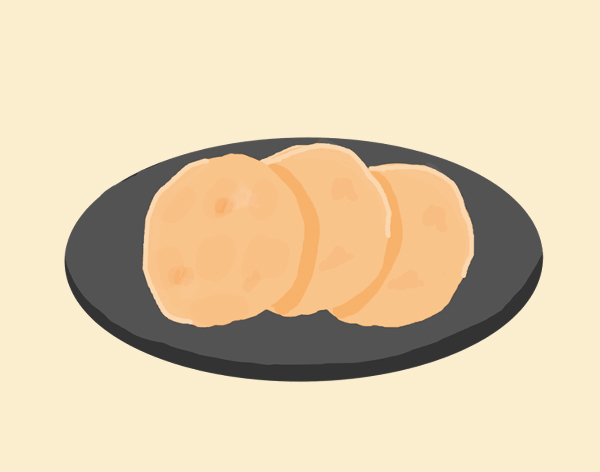
STEP 8
Senbei is ready to be served.
Other Japanese Rice Crackers

Beika (米菓), literally means rice snack, is a term that points to all kinds of Japanese rice crackers. Senbei is a type of beika.
There are three common beika in Japan: Senbei, Arare, and Okaki. The only thing that differentiate the three is the shape and rice type that is used as an ingredient. Other than senbei, here are other famous Japanese rice crackers:
Okaki
Okaki is a type of Japanese rice crackers that are made with mochi rice. Right now, most of the okaki that is sold is manufactured in factories that offer so many shapes and flavors.
It is also common for someone to make okaki out of New Year’s decoration mochi (kagami mochi). The common tradition is to put up this mochi as decoration leading up to New Year’s and eat it by the eleventh of January. After a while, the mochi will have a harder consistency and become more brittle.
At the eleventh of January, families will take down the mochi decoration in their house and smash it instead of cutting it (cutting is avoided because it signifies cutting ties). Smashing mochi on the eleventh day is called Mochi Biraki. Traditionally, these mochi pieces will be cooked into a soup. Alternatively, these pieces can be cooked into homemade okaki as well. The mochi pieces are cut to preferred bite size, dried, and deep fried.
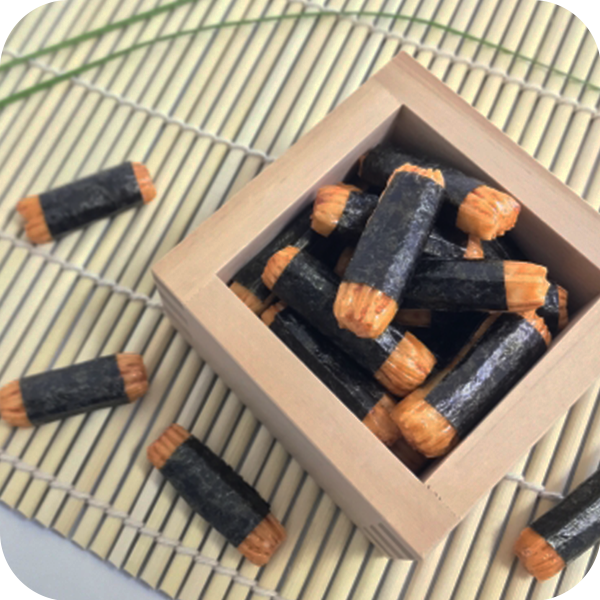
Arare
Similar to okaki, arare is also made with mochi rice. That is why arare and okaki might not be that different taste wise.
Compared to okaki, arare is smaller in size. Arare (霰) in Japanese means snow hail. This snack has a shape that is rather similar to snow hail. It is small and pellet-like. Thus it is called arare.
In Japan, there is a tradition called hinamatsuri that celebrates Girl’s Day on March 3rd. It is one of Japan’s five seasonal celebrations. On this day, parents will celebrate and wish on their daughter’s health, happiness, and growth. One of the traditional snacks to have on this day is hina arare, a colorful arare for himatsuri celebration.
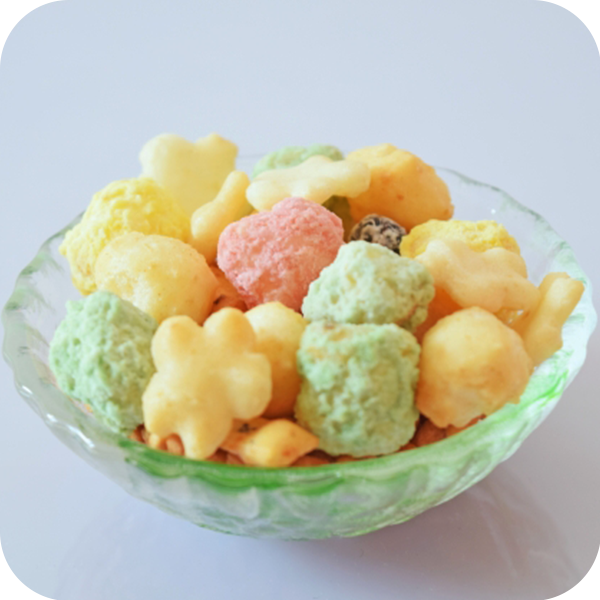
What is The Difference Between Senbei, Okaki, and Arare?
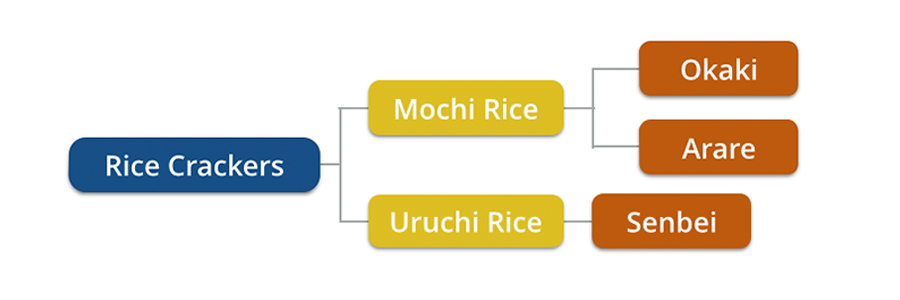
Traditionally, senbei has a circle, disk shape. Compared to arare and okaki, senbei is generally bigger. Although, lately it is very easy to find senbei with unusual shapes like stars, cats, or even cartoon characters.
If we look at the main ingredient, senbei is made with uruchi rice. A typical rice that is eaten every day in Japan. On the other hand, okaki and arare are made from glutinous rice like the one to make mochi. If it’s made from mochi rice and has a medium to big size, it can be categorized as okaki, while the smaller rice crackers made from mochi rice can be categorized as arare.
Although arare and okaki are categorized as two different things, arare is also called okaki in Kansai area.
Calling arare or okaki as senbei is not necessarily incorrect since they are relatively similar and usually sold alongside each other. However, rice crackers brands in Japan called each type accordingly. So if you are specifically looking for senbei, just notice the flat round shape and the ingredient.
Common Varieties of Senbei
Usuyaki And Atsuyaki Senbei
Usuyaki means lightly roasted, and atsuyaki means thoroughly roasted. These are the most classic senbei that is seasoned lightly with salt.
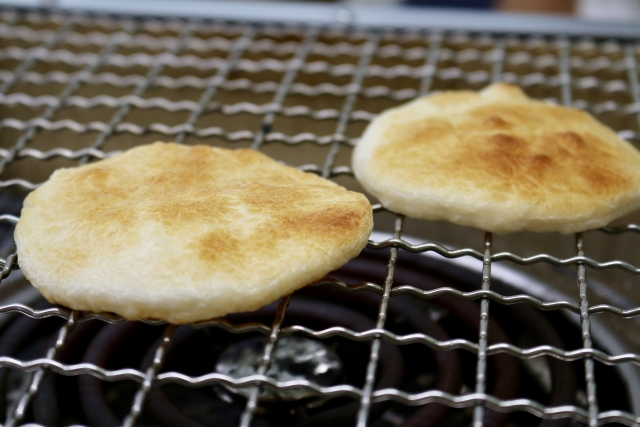
Nori Senbei
After roasting, senbei is glazed with soy sauce and topped with nori sheet. The taste of soy sauce combines really well with the savoriness of nori.
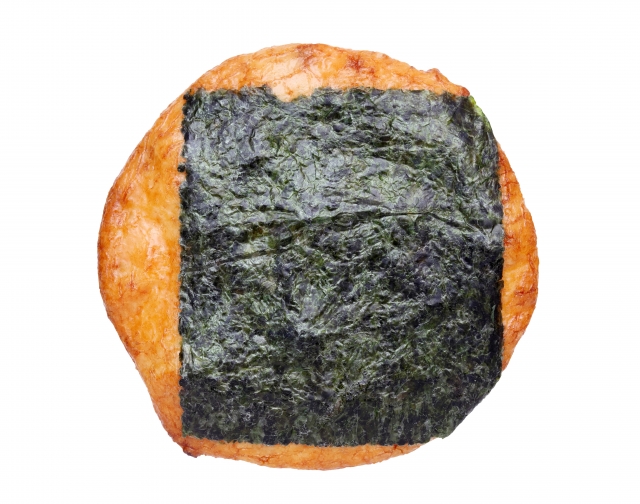
Zarame Senbei
This senbei is sprinkled with sugar. Sugar crystals will enhance the texture and add the perfect amount of sweetness.
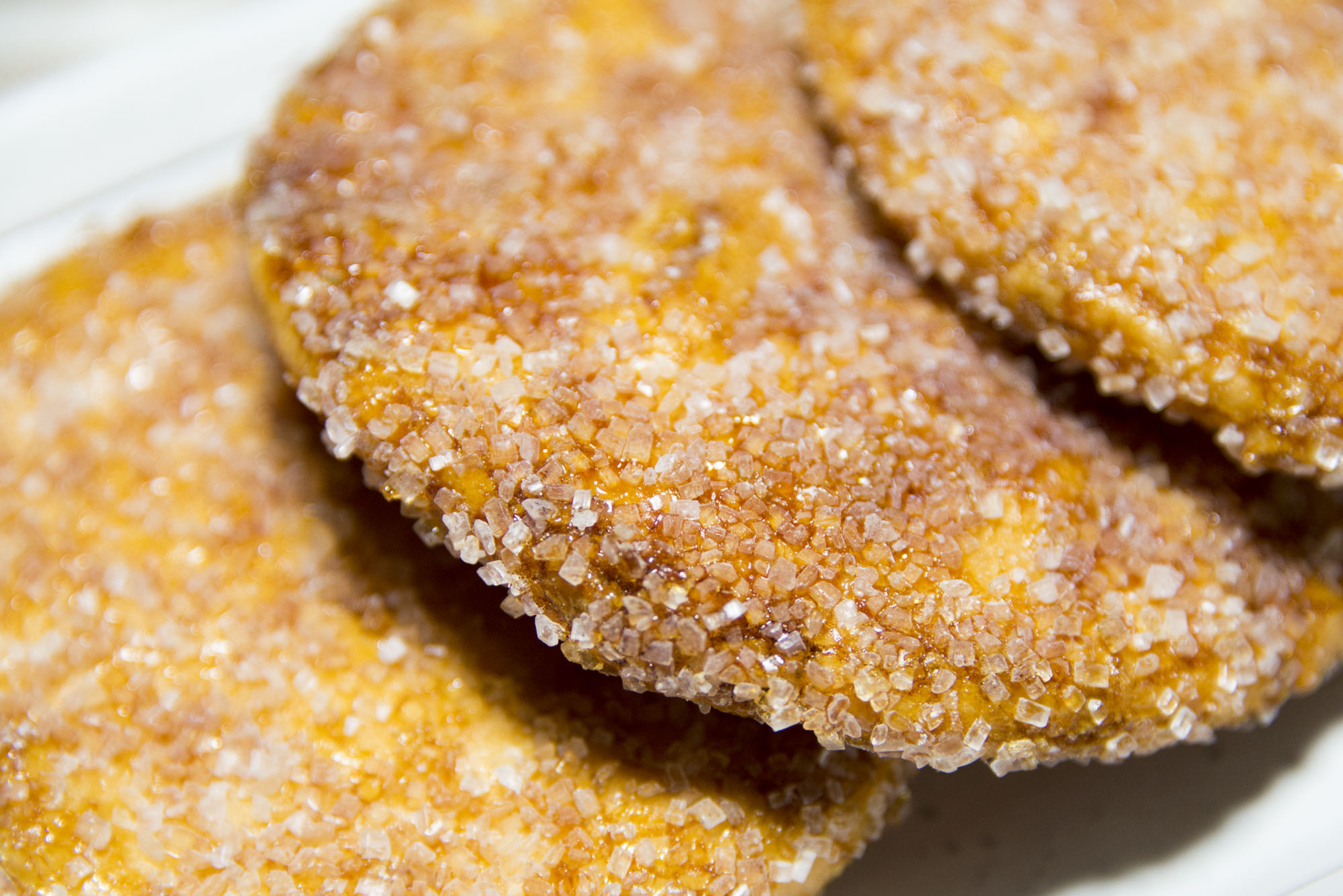
White Sugar Senbei
Another variety of sweet senbei. Instead of sprinkled, this senbei is glazed with white sugar. It has a nice sweet and savory contrast in the taste profile.
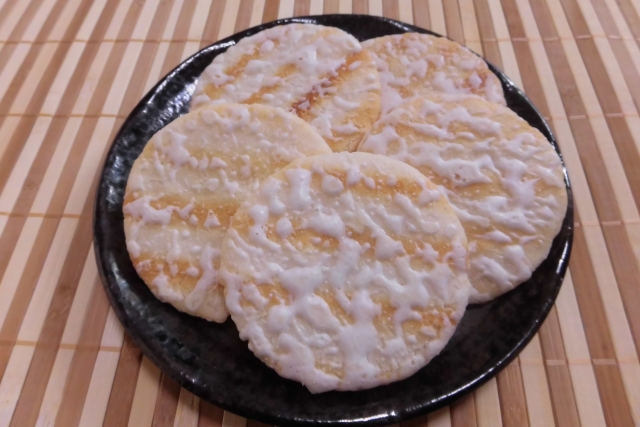
Kometsubu Senbei
This senbei is made from rice that is squished together. This causes the senbei to have a rugged surface which adds an interesting texture to the snack.
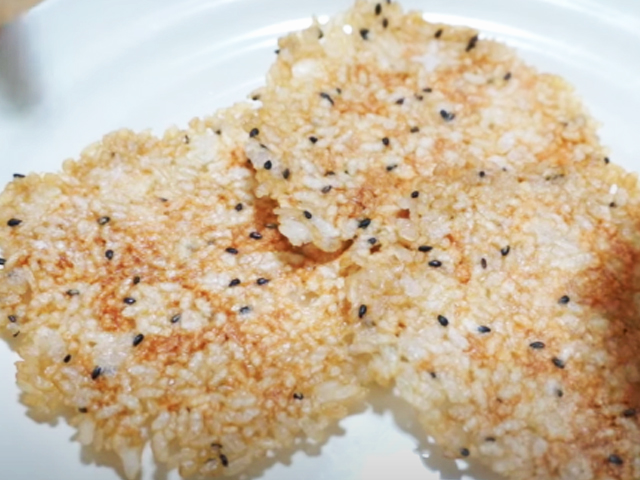
Age Senbei
Typically, senbei is roasted in an open flame grill, but age senbei is deep fried.

Blackbean Senbei
Also called kuromame senbei, this senbei is a great choice to bring as a filling snack for a picnic or excursion.
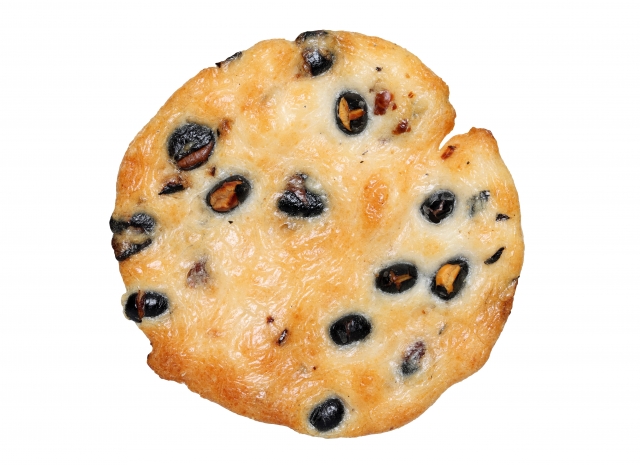
Famous Specialty Senbei
There are so many choices of specialty senbei depending on the prefecture. It’s almost impossible to cover everything in one go. Therefore we can only feature some of the most famous specialty senbei in Japan.
Nure Senbei
Nure means wet in Japanese. This senbei has a chewy soft texture and a prominent soy sauce taste. Nure senbei is dipped in soy sauce right after it is roasted. Because the senbei is dipped while it is still hot, the flavor of soy sauce is soaked up to the inside and causes the senbei to have a soft texture.
Prefecture: Chiba, Niigata
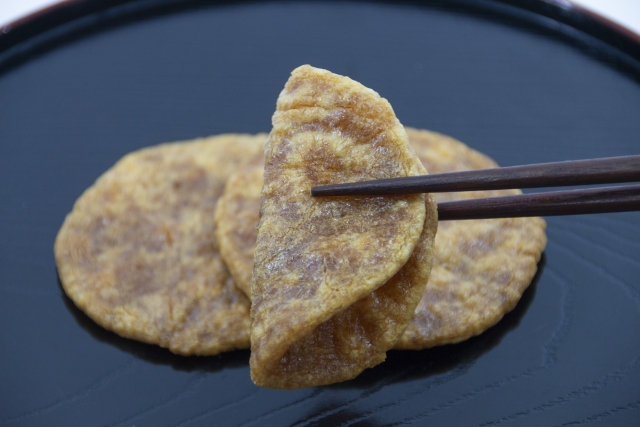
Soka Senbei
Soka senbei is said to be one of the oldest senbei in Japan. There is a legend that In Edo period, a person called Osen invented the first modern senbei using leftover dango.
Soka senbei is simple and savory. When someone says soka senbei, the first flavor that comes to mind is soy sauce. But soka senbei also has other seasoning such as miso, sesame, garlic, and other classics.
Prefecture: Saitama
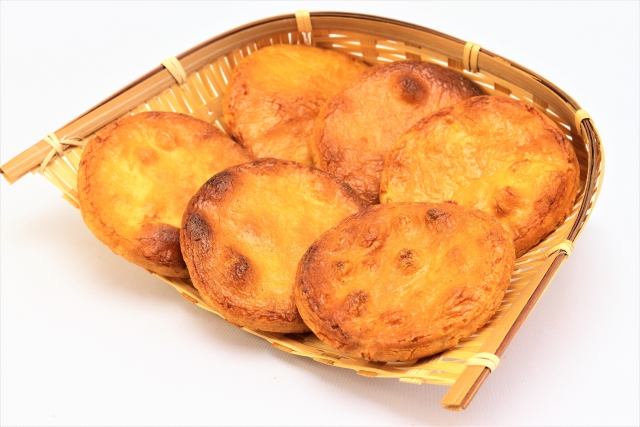
Tansan Senbei
Tansan senbei is a variant of sweet senbei. It has a light texture that is similar to wafer. Tansan means carbonation. As the name implies, tansan senbei is made with natural carbonated water that springs from the mountains. Tansan senbei is a delightful souvenir to get when visiting a hot spring area in Hyogo.
Prefecture: Hyogo
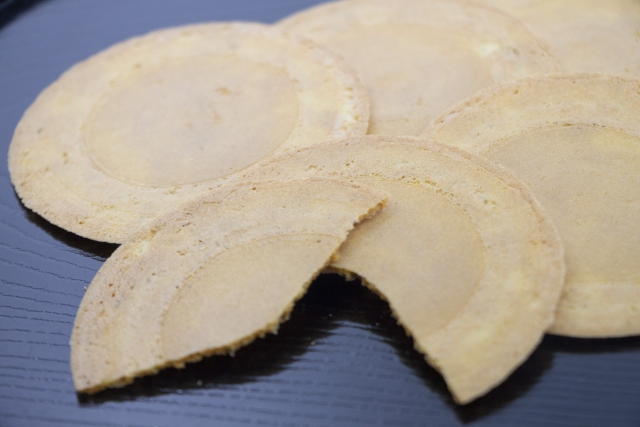
Deer Senbei
This senbei is not necessarily for human consumption. It is a senbei that is specially made for deer. One of the most famous tourist spots in Nara is Nara park and Todaiji Temple. In these places, there are a lot of free deers walking around. You can buy this senbei and feed it to the deers.
Prefecture: Nara
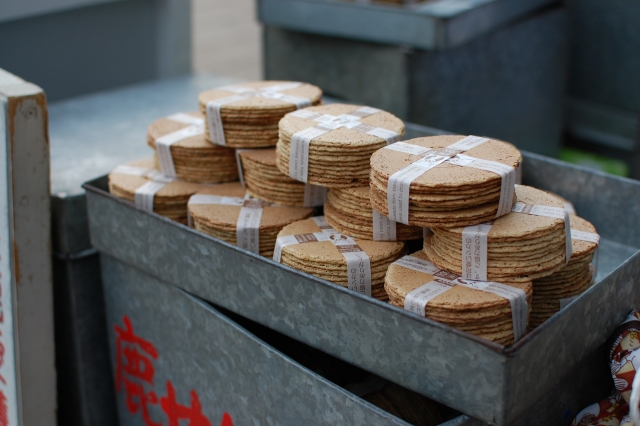
Nanbu Senbei
A variant of senbei that is made with flour. Nanbu senbei can be categorized as a sweet senbei. What makes this senbei taste delicious is the fact that it is not overwhelmingly sweet. Usually it is sprinkled with sesame seeds or nuts.
Prefecture: Aomori, Iwate
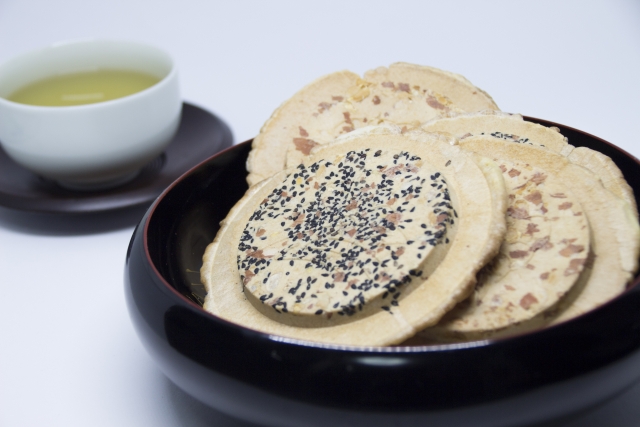
Kawara Senbei
This senbei shape resembles a roof tile or ‘kawara’ in Japanese. Because of the biscuit-like texture, this one is best enjoyed with coffee or tea.
Prefecture: Hyogo, Kagawa
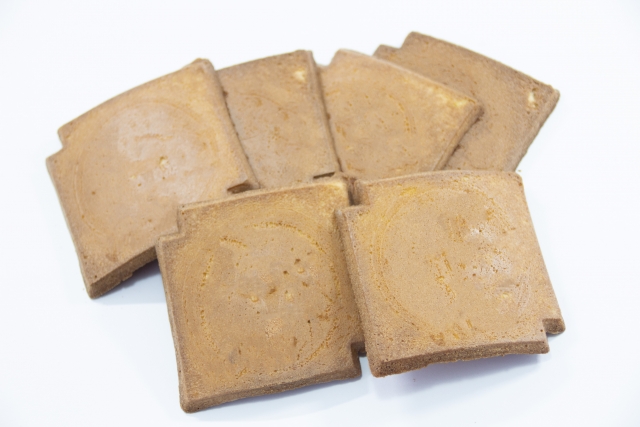
Other ‘Senbei’
These ‘senbei’ don’t have the classic shape nor taste. In fact, the term senbei is used very loosely because some of these can be made without rice in the first place.
Seafood Senbei
Common seafood senbei are squid senbei, octopus senbei, and shrimp senbei. These senbei are made from fresh seafood. What makes these unique is the fact that the seafood shape is kept as is without too much processing (grinding, mixing, etc). Because of that, the original umami of the seafood will be very pronounced.
After being roasted, the senbei is deep fried so it has a crispier texture. After frying, the flavor is enhanced with special glazing that goes very well with seafood type senbei.
There are also other types of seafood senbei where the seafood is more processed and used as seasoning or sprinkled on top of the senbei.
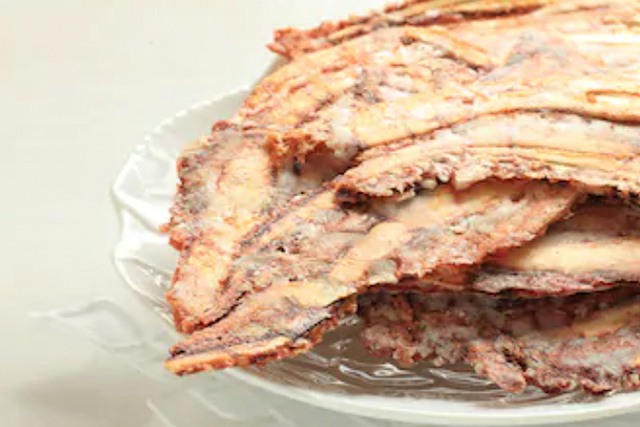
Hone Senbei
Hone senbei is made from deep fried leftover fish bones. This snack is tasty and rich in calcium. Since it is a common snack to pair with alcoholic beverages, they are very easy to find in Japanese traditional pubs or izakaya.
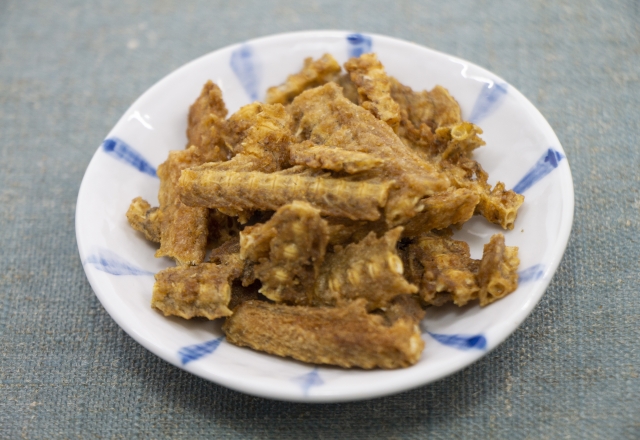
Shirasu Senbei
Shirasu or whitebait is a group of small young fishes. They’re usually eaten as a whole with heads and bowels still intact. Because the texture of whitebait is very tender, they are enjoyed as a delicacy in multiple countries including Japan.
You can make shirasu senbei by flattening the shirasu and cooking them in a fry pan. If you want, you can also mix the shirasu with a little bit of rice first before flattening and frying the senbei.


